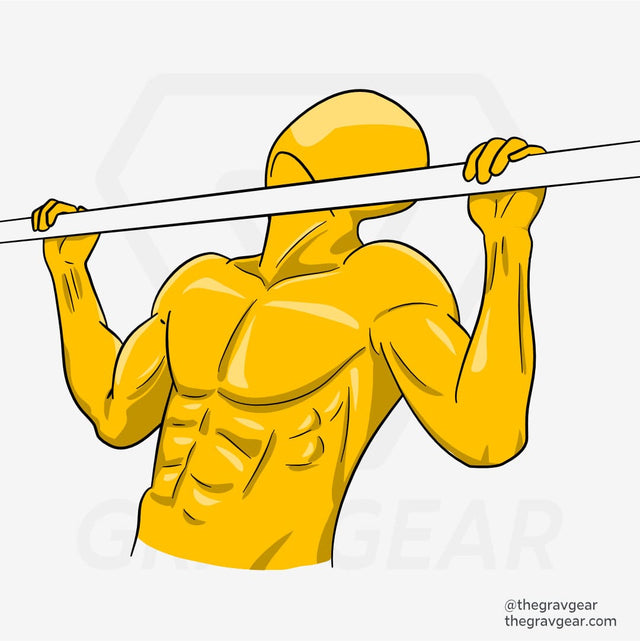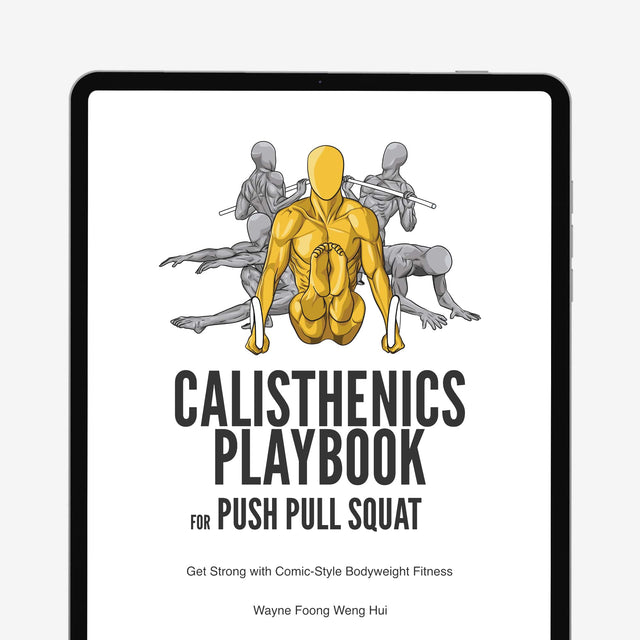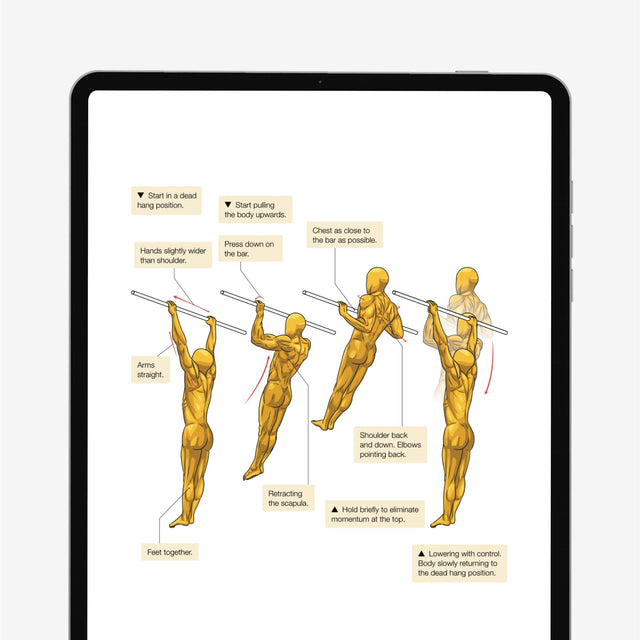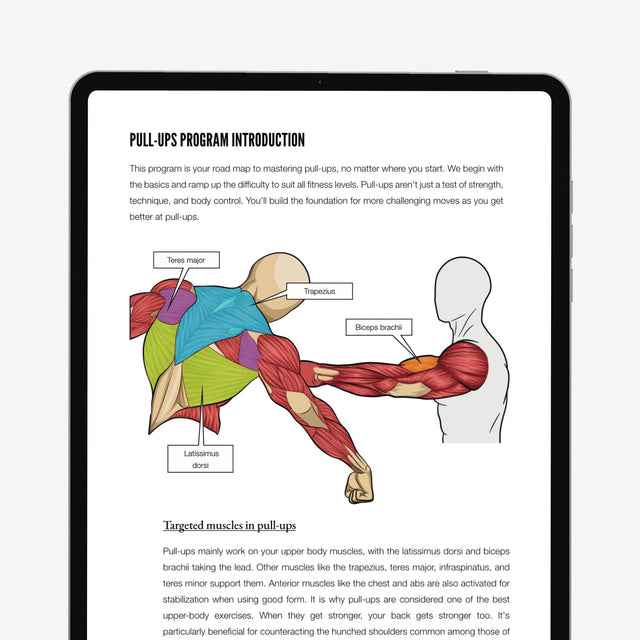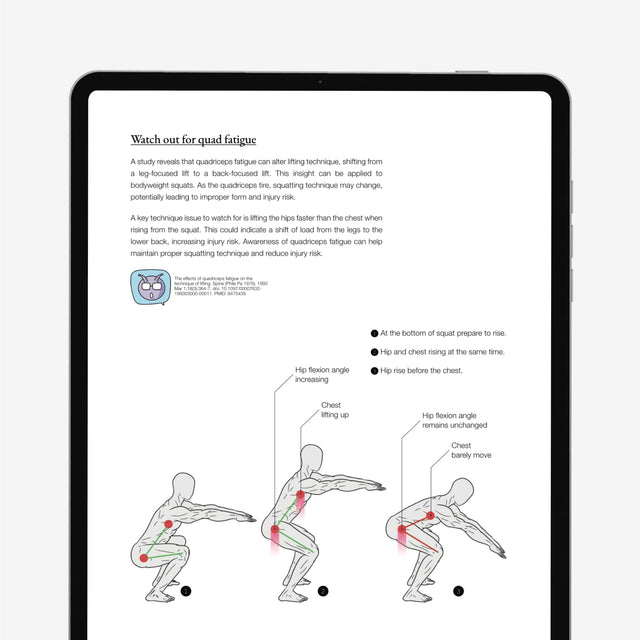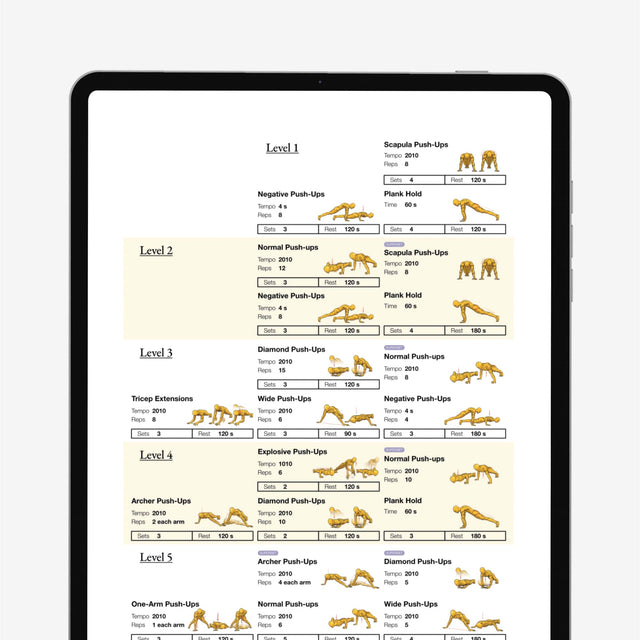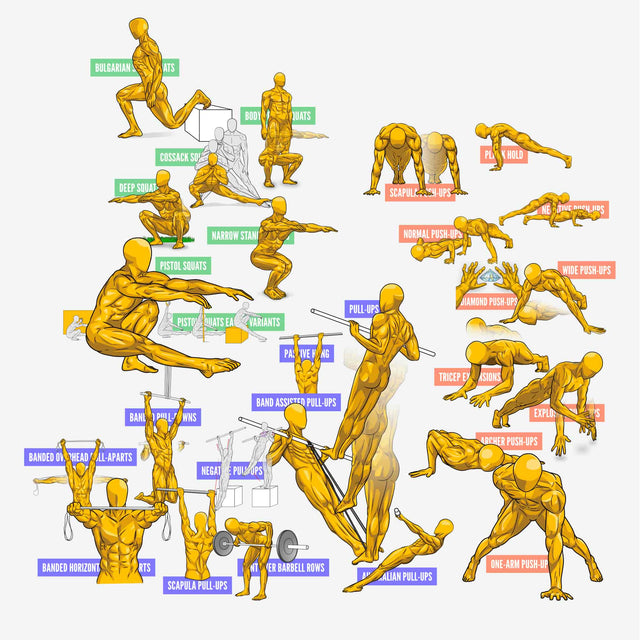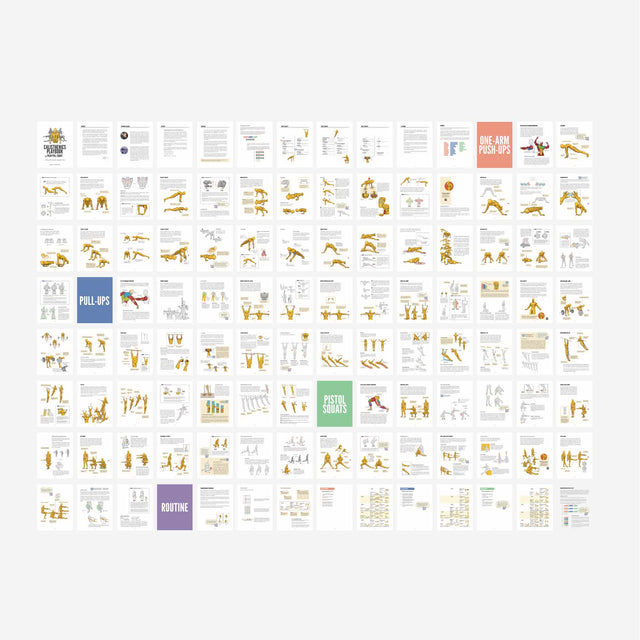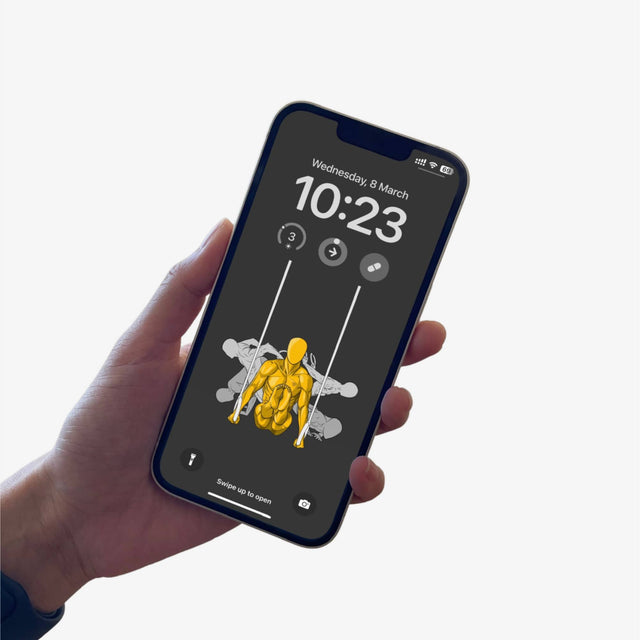These 12 Pull-Up Alternatives Will Give You Enormous Strength
Many people find the pull-up to be one of the most effective ways to build upper body strength, but they often find them too tough. And even if you can do a few, you may not be able to do as many as you'd like.
Luckily for those who want stronger backs and arms, there is plenty of great pull-up alternative that works well!
Table of content:
- Why pull-up alternative is useful
- What muscles do pull-ups target
- Best pull-up alternatives
- If you have the strength for pull-up
- If you don't have the strength for a pull-up
- When can you move up to a real pull-up
- Pull-up alternatives are for all level
- Equipment that you can use for pull-up alternatives
- The bottom line
Why pull-up alternative is useful
Here are the reasons you may want to consider doing pull-up alternatives:
First reason: Pull-up is too hard
Pull-up is too challenging to regular people. While pull-up can be a warm-up routine for some, it could a someone else's fitness goal.
The good news is by doing enough of alternative pull-up exercises, the strength gain can largely transfer to unassisted pull-up, according to study.

Pull up is usually too hard to even complete one rep for beginners. For anyone who's seeking to build strength, having a well-rounded workout plan is key. If you want to complete 8 reps of pull-ups but can only do 2, it doesn't make sense to focus on pulling yourself up. Instead, do alternatives to pull-up that may strengthen your back and shoulders!
Second reason: Limitation of training facilities
Have no access to facilities such as pull-up bar: Pull-ups may be one of the best exercises to strengthen the upper body but it requires a pull-up bar or some other facility to do so. Alternatives to pull-ups can be done at home, outdoors, or anywhere where you don't have access to facilities.
You want to work out at home: Working out at home is awesome. And that's the biggest perk of a bodyweight workout as well. However, it usually means you have to improvise your training routine with what you have at home unless you have full-blown gym equipment in your living place. If you don't, keep reading for the following pull-up alternatives.
What muscles do pull-ups target
Frankly, the pull-up alternatives are too long to list (but we'll try). So it's best to understand what muscle groups pull-up is working out so you can choose (or create) some other alternative exercises to work for the same muscle groups.
Pull-up is known best for building amazing upper body shape by working your back, shoulders, core, and arms.
A study done by Human Performance Laboratory, Department of Physical Education, USA, shows the prime movers are middle fibers of trapezius, latissimus dorsi, biceps brachii, and rectus abdominis.

Here are all the muscles involved in a regular pull-up:
1. Abdominals (Rectus Abdominis)
Our core involved a ton in pull-up. In another word, the stronger your core is, the easier pull-up will be for you. Pull-ups are also great at working not only upper abs but lower ones as well.
A stronger core acts as the biggest stabilizer muscle to keep the pull-up nice and clean.
2. Biceps brachii
Biceps are the second most involved muscles in pull-up after our core. Pull-ups mainly focus on the lower part of the biceps and this makes pull-ups great at making arms stronger and bulker.
3. Latissimus dorsi
Also known as lats or wingspan, the latissimus dorsi is the largest muscles in upper body and it's really wide. Pull-ups alternative exercise works this muscle group a lot to widen the back and draw the shoulder blades together.
4. Trapezius
The trapezius is also known as neck muscle. Pull-ups work this muscle group to widen your upper back, which is a key factor that defines broad shoulders.
5. Infraspinatus
Infraspinatus is a flat, triangular muscle on the back of the shoulder blade. Pull-ups work this muscle group to lift and rotate the arm outward.
6. Teres major
This is a rhomboid-shaped muscle in the upper back that also contributes in rotation of the top part of the arm outwards. Pull-ups work this muscle group to lift the top part of the arm outwards.
7. Thoracic erector spinae
Pull-ups work this muscle group which is located at the mid to lower back. Pull-ups work this muscle group particularly on the thoracic part of spinae erector muscles, although it also involves many other parts of your back.
8. Serratus Anterior
Your serratus anterior is part of your shoulder blade and it looks like a shark fin sticking out on side of your body. Pull-ups work this muscle group more when you keep your body in a straight line.
Best pull-up alternatives
We've categorized into 2 different scenarios to help you better choose what pull up alternative exercises will suit you the best:
- If you don't have the strength for pull-up.
- If you have the strength for pull-up
Also, we will stick with bodyweight exercises as much as possible because the gain is much more transferable to pull-up than machinery weight lifting.
After all, pull-up itself is one of the best (if not the best) bodyweight workouts.
If you have the strength for pull-up
So you have the essential strength for pull-up but you don't have access to the pull-up bar. You can be at home without the facilities, or you can be traveling but don't the local gym welcoming. You are considerably strong compared to the other categories, here's something you should try and they could work better than the traditional pull-ups.
Australian pull-up
Also known as an inverted pull-up, or inverted rows and body row. This is a great pull-up alternative in which you can practice the pulling motion without full bodyweight.

To execute this variation without a bar, you need a sturdy table or chair. Position your body in a straight line under the table, hands gripping the edge of the table with shoulder-width apart. Pull yourself up until your chest is hitting the table. Slowly lower until your arms fully extended to complete a repetition.
Australian pull-up requires that you support most of your body weight with your arms which is very similar to the traditional pull-ups. Pulling up with palms facing down emphasizes more on your biceps and arm muscles (compared to other hand positions such as underhand grip).
Rings pull-up
Nothing can contribute to your calisthenics gain as much as a pair of gymnastic rings. They are compact, lightweight, and affordable. Pack them in your bag or luggage, hook them up with a sturdy anchor point and you have a better setting than high-rise pull-up bar.
You can find many stable anchor points in the surroundings. Such as tree branches and staircase handles.
Another thing to know about ring pull-ups is that they provide a wide range of hand positions. Bar pull-ups only use one grip style at a time. But ring pull-ups allow you to switch between overhand grip and underhand grip. This allows you to hit different muscle groups in your back, shoulders, and arms.
Similar to TRX pull up, the free motion of rings is very friendly to your joints as well. Use these additional gymnastic rings workouts to build incredible strength.
Ring butterfly
Ring butterfly is one of the best variations to activation lower traps, lats and rear delts. Because it needs a strong grip, ring butterfly can train your forearms too.
To set up without a high-rise anchor point, you can simply use the door as an anchor. Slightly open the door, loop something big and soft (such as a towel) to the gymnastic rings straps, leave the anchor object at the other side of the door and close the door. Make sure no one will open the door without your notice. Better yet, lock it up while you are training.
Throughout the whole exercise, keep your arm straight, core engaged and elbow locked out. Start by opening your hands to the side to form a straight line between hands and shoulder.
Your shoulder blades and lats should be doing most of the work. Slowly bring them back to starting position.
Resistance band lat pull-down
You can attach resistance bands to anything firm that has a handle. Pull-down is one of the most common back exercises used in gym, yet it's easy to do at home (or anywhere) with banded lat pull down.
Resistance bands also offer variable tension which makes the movement more natural and safe for your joints.

To execute a resistance band lat pull-down, wrap one end of the resistance bands around a stable anchor point (such as doorway or door handle). Kneel down with engaged core, you can use yoga mat underneath.
Pull the other end of the resistance band so that it provides tension. Pull down your arms until they reach the sides of your body or until you feel a stretch in your lats. Pulling down both arms at the same time engages both sides of your back.
Throughout the movement, your arm should be the only part that is moving. Not your trunk nor your lower body. Keep the head in neutral position.
Alternatively, you can pull down one arm at a time for single-side training and then switch sides with every set.
For optimal results, we recommend using a rubber band that can provide anywhere from 10 to 30 pounds of tension (for beginners). If you're not sure if you're ready to do this exercise, start with lighter resistance.
If you don't have the strength for a pull-up
Most beginners would fall under this category. Don't be discouraged, we're sure you will be getting stronger in no time because beginners adapt the fastest.
Doing these pull-up alternative exercises consistently and you should be getting your first pull-up within a few weeks.
Chin-up
Excellent beginner's exercise where you can build fundamental strength for pull-up. Pull-up is just with your palms facing towards you(underhand grip), while chin-up has palms facing away from you(overhand grip). Both exercises engage almost the same muscles as chin-up does.

So if you think last time you did 10 reps of bicep curls with 20lbs dumbbells and this time it's only 15lbs dumbbells in the same movement and same form, then that's how similar chin-up is compared to pull-up.
It is easier to perform because the underhand grip utilizes more of our anterior chain, which is naturally stronger than the posterior chain activated by the overhand grip.
Note that chin-ups cannot replace pull-ups although they are very similar. Pull-up engages many more muscles including lats, lower back, and shoulders which chin-up doesn't target as much.
Negative pull-up
If you want to acquire the strength for pull-ups in a quick way, then negative pull-ups are your friend.

The concept is simple, you jump up to the pull-up bar and grip the bar hard with shoulder-width apart while squeezing your upper back muscles. Slowly lower yourself into a dead hang position. That's one rep of negative pull-up.
You are working on the eccentric portion of the pull-up instead of pull-ups. The eccentric portion of a movement is the part where your muscles lengthen such as your lowering yourself down from pull-up.
The negative reps will help you develop strength rapidly and it is very safe to perform, compared to the traditional pull-up.
Curl
Yes, a good old bicep curl is another good exercise that will help you build strength for the pull-up. It targets the biceps which is vital in pull-ups and chin-ups, so it is a great idea to add bicep curls into your workout routine.

Using heavy dumbbells while performing the curl will strengthen the muscles in your arms more and also help with developing better grip strength for pull-ups.
Remember to keep your back straight and core tight when doing a bicep curl. You want to involve as much stabilizer muscles as possible to transfer the gain to pull-ups.
Resistance band row
This is another effective resistance band exercise to tarket your back and lats. It can be done with a stance or seated. Try the stance version first for best result.
You don't even need external anchor point to loop the band, use just your feet. Loop them around both your feet. The wider your stance is, the more tension in the band thus the harder the workout. We suggest to start with shoulder width.

Here is another tips to do a proper band row, grip both the band instead of just the top band. This way, you get consistent tension through the band and in every session. Keep your upper trunk straight and core engaged at all time.
Do 5 to 10 reps in a set and you should feel the lats burning after a few sets.
Lat pull downs (with machine)
Lat pull downs is another good alternative to pull-up that works the same muscle groups pull-ups do.
Lat pull downs are done by gripping a bar attached to the weight stack (on pulley system) with palms facing away from you and then pulling the bar down towards your chest and then back up again.
Always start with lightweight to get used to the movement before adding more weight.
Wide grip lat pull down
Pull Downs of the lats are good for getting increased volume in this motion even while we are tired of pull ups. You can concentrate on contracts and pulling out your lat muscles and lat lifts with no fatigue. For people who can't do an unassisted pull up the lat pull down is perfect because you can set the weight or resistance at an amount that's manageable.
Keep your core engaging through a whole motion head forward and try to regulate the bar back into a 2-3 seconds time frame to get maximum eccentric contraction and longer duration under tension.
Assisted pull-up with resistance band
Similar to negative pull-up, banded pull-ups is a great pull-up alternative to reach your first pull-up.

Loop the resistance band to the bar, then step on the hanging bands with one or both legs while grabbing the bar with hands. Pull yourself up until your chin is above the bar. You should notice the obvious assistance from the band to pull you up.
The biggest bonus of assisted pull-ups is that you can practice the movement in its true form. Everything should be the same as if you are doing a regular pull up without assistance.
Choose the heavier or thicker band if the assistance is too weak to bring you to the top position. Keep your core engaged at all times. Arms straight at the dead hang position.
Supinated lat pulldowns
This practice requires an underhand grasp that is not particularly wide. The main difference between a supine pull down and the broad grip pulldown is the work that requires two biceps alongside your lats. All suggested reps were 10-16 reps per hour.
Isometric hold
Isometric hold is where your muscles length stays the same. Jump up to the bar, hold the top position for 10 seconds then come back down slowly.
This is an excellent workout to target your upper body muscles. Grip the bar with shoulder-width apart and palms facing forward. Hold shoulder blades as that's the main driver of pulling strength coming from.
Record your max hold time as this is the measurement to gauge your progress.
When can you move up to a real pull-up
Doing alternatives to pull-up is all good unless you should start doing unassisted pull-up once you have the strength. Pull-ups require full-body strength, which means you should have good grip, torso, and core strength.
Pull-up prerequisites checklist
You can now try a real pull-up if you can do:
- at least 3 chin up with a neutral grip and close hand position.
- at least 5 negative pull-ups with 4 seconds coming down.
- at least 3 Lat Pulldowns with 20lbs of additional load.
If you cannot do any of these movements or need more time to practice, then stay with the pull-up alternatives listed above until you can meet the criteria.
Do a biweekly strength test
Performing a strength test every 2 weeks is a great way to see how much progress you've made and what still needs improvement.
Pick a day where you have at least 24 hours of rest from the last training session. And do the pull-up alternative workout to your maximum reps.
Record down the number so you have something to compare with at the next strength test.
Pull-up alternatives are for all level
It doesn't mean you should stop doing all these pull-up alternative workouts if you already can do regular pull-ups without assistance.
Pull-up alternatives are meant to help you maintain your level of strength, endurance, and muscle mass. They can also be used as assistance workouts for people who want to increase their pull-up numbers of repetitions.
Easier progression can reap the benefits of endurance workout to develop better oxygen delivery to muscle and endurance capacity. Higher muscles endurance means you can accumulate more reps, hence more gain.
Equipment that you can use for pull-up alternatives
We've been focusing on the calisthenics approach on the alternative to pull-up. Although we don't really need equipment for calisthenics workouts, certain equipment is necessary to make your life easier.
This equipment will either allow you to work out in a remote location (hotel) or they can make the training more adaptable to your fitness level.
Pull-up bar
You need something to hold on to do a pull-up. Pull-up bar can be in many forms:
- Pull-up bars or monkey bars at the local park
- Portable doorway bar
- Barbell at benchpress station
Resistance band
Optional but super handy tool that can make your modified pull-ups easier. We've listed a few exercises above that go well with a band and they are not limited to that. With creativity, you can almost integrate a band to make any workout easier or harder.
They can be found in a number of colors and styles, which makes them both beautiful and functional. They're also rather cost-effective and convenient to bring along.
Gymnastic rings

Same as a resistance band, a pair of gymnastic rings are very useful to cope with your alternatives to pull-ups.
- You can strap the rings in any stable object to form a pulley system.
- Swap the typical strap with a resistance band and use the rings as a handle. Now you can do banded exercises such as lat pulldown more efficiently.
- For a beginner who has weaker and inflexible wrist joints, gymnastic ring is an excellent tool to do pull-up alternatives with a neutral grip.
Weighted vest
The common misconception with weighted vests is that they are only meant for the advanced athlete. In reality, they can be helpful to gain your first pull-up.
An adjustable weighted vest allows you to increment the load over time with 1kg of weight at a time. This makes progression overload much easier.
The bottom line
These are the best option to pull up for people who aren’t even ready for complete pull-up but are looking for a new way of doing things. Whichever way you choose it's all about building your muscle mass and being more fit yourself. The key is to put in the work and do it with consistency. The more exercise you do the more your result will improve.

